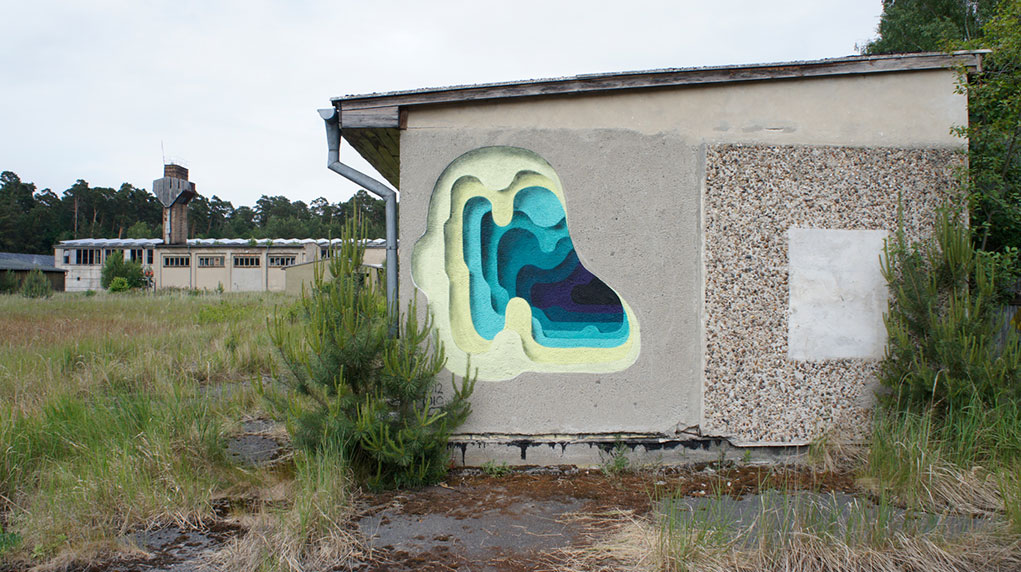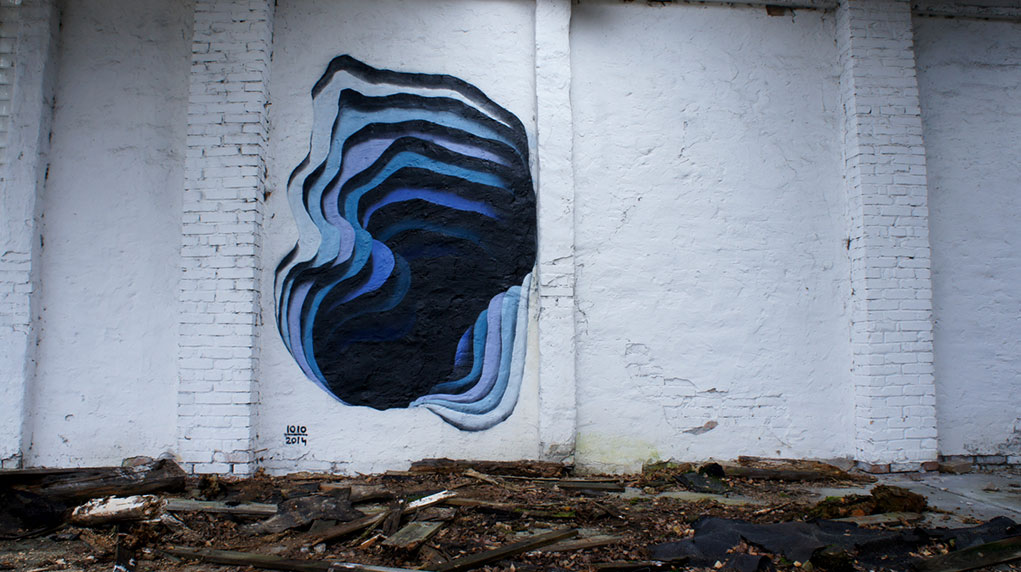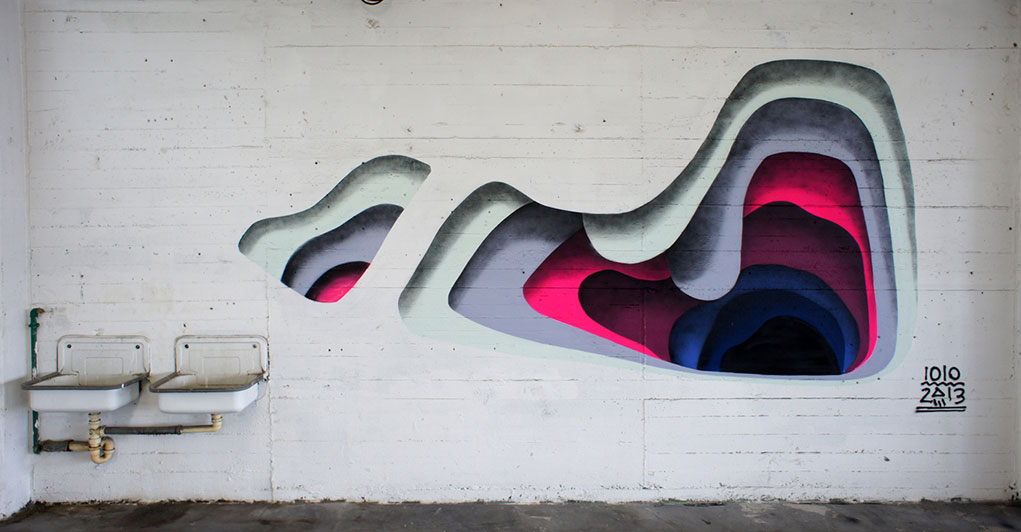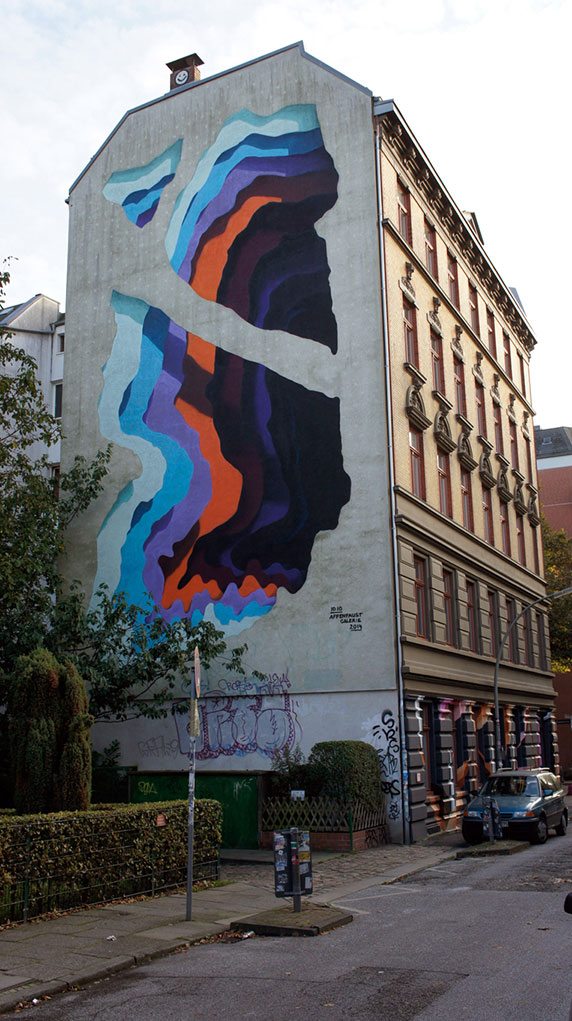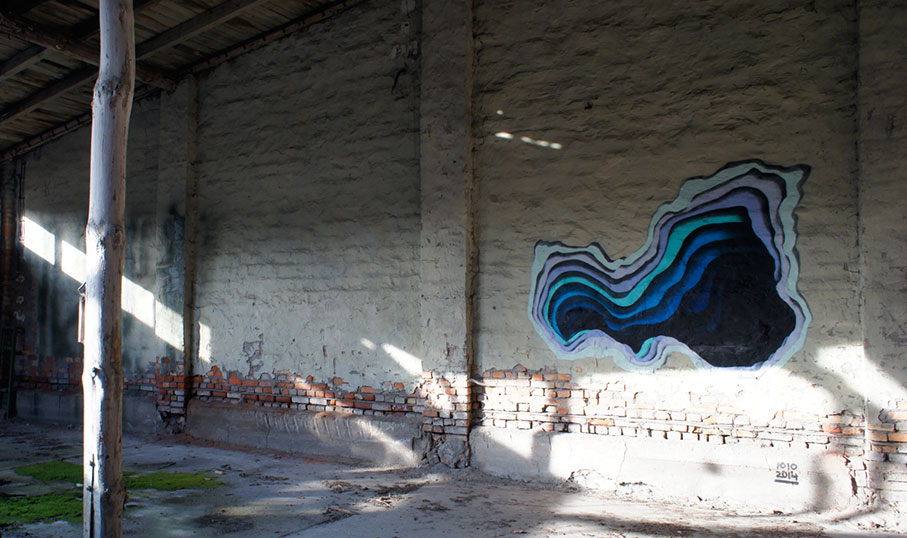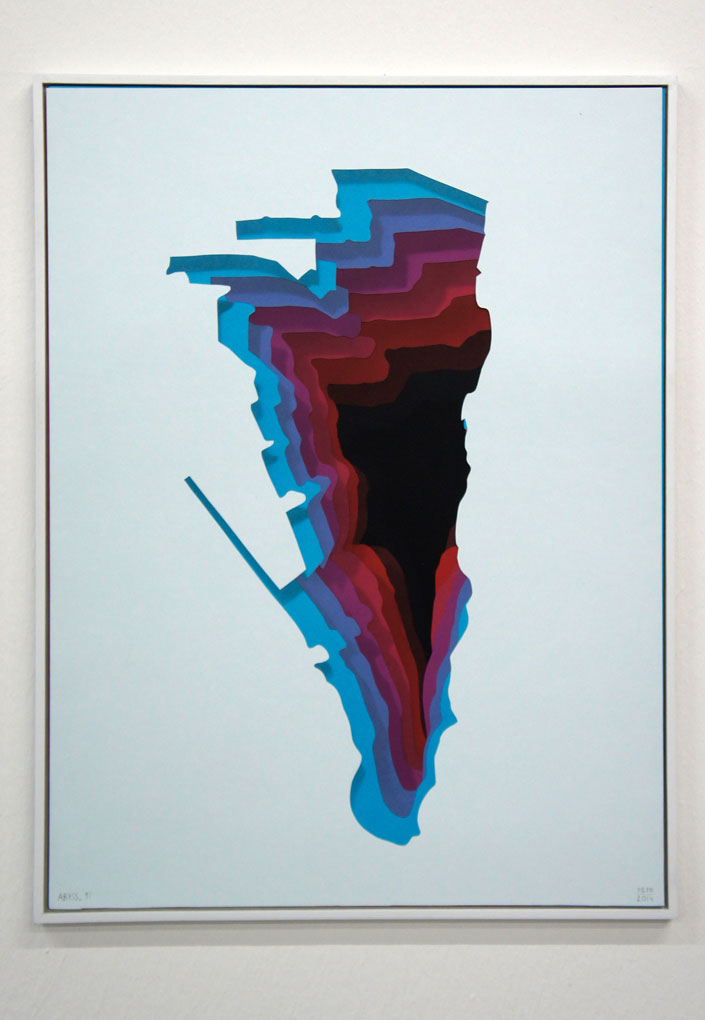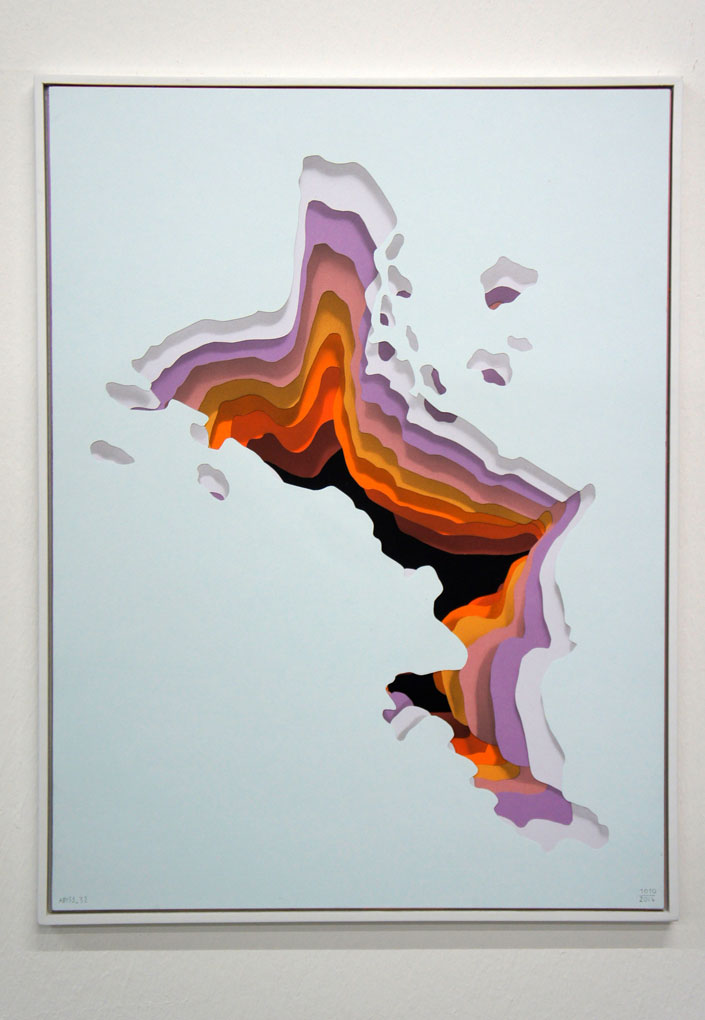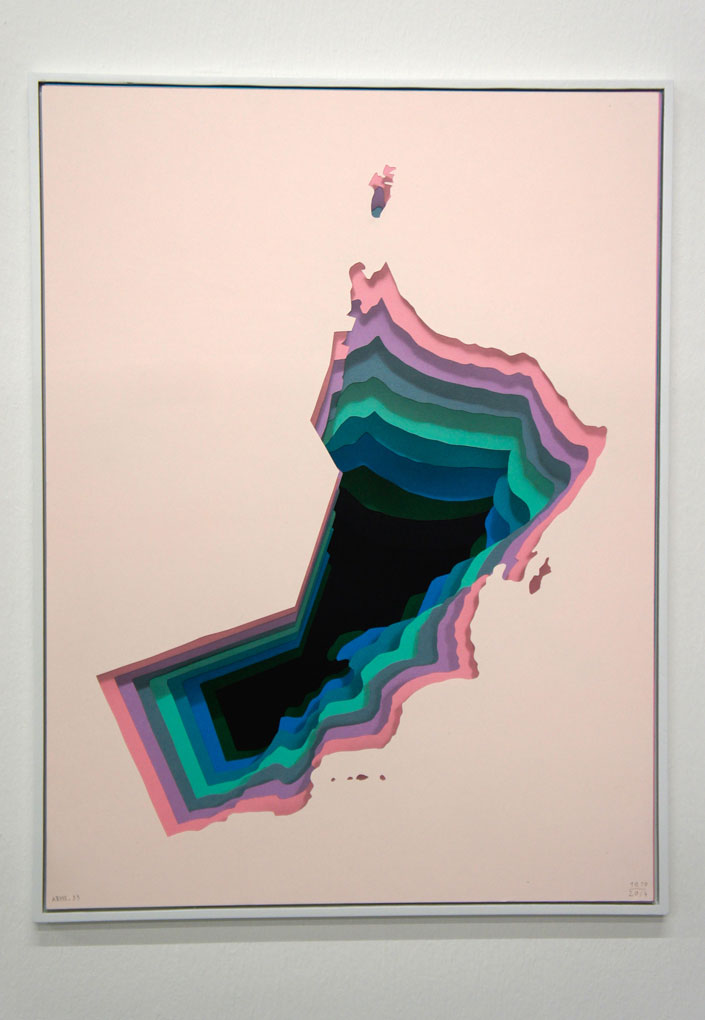Preview: “Limbus” 1010 Solo Exhibit @ Hashimoto Contemporary [SF]
Check out images & details for the German street artist’s first US solo exhibit, feat. a handful of medium to large-scale framed paper works & an onsite mural
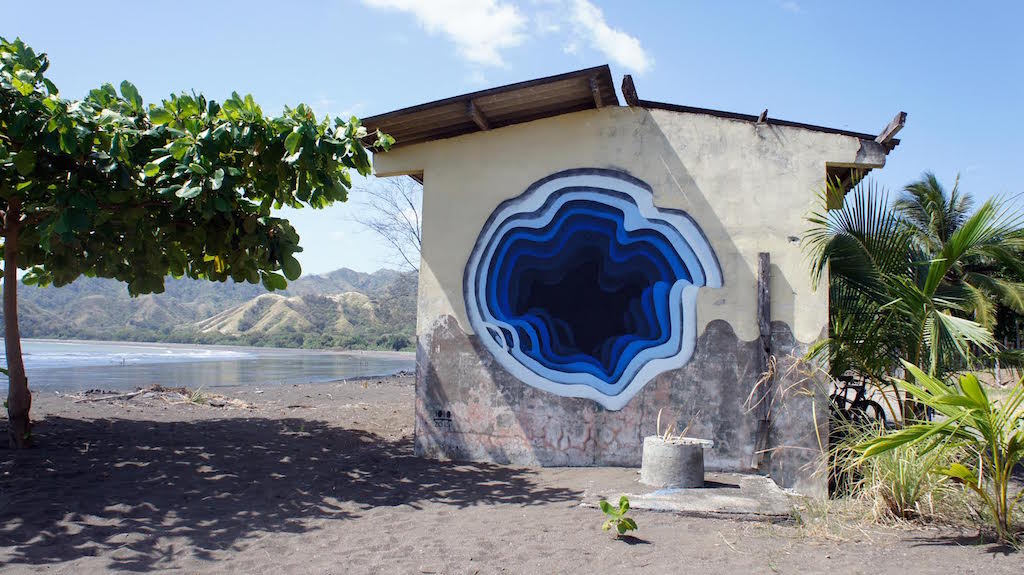
“Street art” is a pretty fascinating term. In the past, it may have referred primarily to “graffitti” and, I guess that in the most technical sense, the majority of it does still remain just that. When the term first came into form, a major portion of the population were even less accepting of it than they have become in more recent years — “Street art? They’re just breaking the goddamn laws, scribbling their goddamn balloon letters all over every goddamn thing, and violating our goddamn communities!” And while high profile figures like Banksy have, in fact, built the initial foundation for their careers through spray painting and pasting illicit images, and/or scrawling subversive text and imagery on an endless amount of public surfaces illegally (in other words, “graffitti”) the employment of outdoor installations and a broader approach in the work, both by the illusive UK pioneer and others, has come to overtake the term and define it for many. Artist, Joshua Allen Harris has captured the imagination of the public with his “Inflatables,” animals that are constructed from plastic trash bags, taped to vents, and given life by the subway exhausts whooshing up from below the city. Meanwhile, Mark Jenkins‘s lifelike tape sculptures, which are often placed in precarious situations, have both boggled passersby and frightened them to the point of calling 911 for assistance, on more than one occasion. And while the nature of Harris‘s work is likely looked upon more favorably by the square community as something more whimsical and akin to a Venice Beach juggler/street magician bringing joy to the children, and Jenkins comes across like a trouble-making deviant and prankster, they both essentially do the same thing; namely, infiltrating public spaces to penetrate the mundane with something a bit more electrifying. Most importantly, the approach of such artists has inevitably broadened the conversation about the scope of what street art is and what it encompasses. Additionally, they’ve provided plenty of ammo to the discussion from all sides, whether one embraces the narrative that there is validity to the artform — and that it is even an artform, at all — that is genuinely beneficial, perhaps even vital, for our society to have available to us in an uncensored form and with access to all, or that it is simply vile, debaucherous, anti-authoritarian filth, infecting the innocent minds of our delicate, impressionable youth and spreading moral corruption like the social equivalent of a venereal disease. Of course, that all depends on one’s perspective and who they actually believe owns public space to begin with.
Shepard Faerie came up in the DIY Punk and skateboard worlds, going from doing shit like wheatpasting images of Andre The Giant on political billboards to creating the notorious Obama HOPE image used in the 2008 presidential campaign and finding his work in high end galleries and celebrity homes the world over — he even had a lawsuit filed against him for appropriating the original Associated Press Obama photograph, only to have his resulting work become more imitated and iconic than that initial source material could ever hope to be. Ron English has been arrested for commandeering and altering billboards to express his social commentaries more times than even he might know off the top of his head, but if you tell someone that he made the overweight Ronald McDonald artwork used for the documentary Super Size Me, his work becomes legitimized to a certain extent. The counterculture is being brought indoors and accepted with enthusiastically open arms by the “edgy” Hollywood elite, taken from their natural habitats and put on display in sterile mansions. And that trickles down, when someone like Angelina Jolie expresses an affinity for a particular streetartist and the people who read celebrity mags from the supermarket checkout lines get a hold of them.
Still, for the everyday suburban soccer mom who is either simply unable to recognize the often subtle differences that separate the various styles and techniques of artists/taggers who focus on lettering, or simply couldn’t be bothered to give a shit, I would imagine that it may often also be difficult to embrace the idea of something as seemingly accessible as a mural, strictly due to the idea of spray paint being utilized as a medium and the side of a building as a canvas, making that separation difficult, even when these pieces have been commissioned or sanctioned. Perhaps, these days, the division between the idea of what one considers to be “street art” versus “graffiti” might be as vast and defined as that between “fine art” (aka “real” art) and “street art.” Or maybe that does make a difference for people, that idea that if it’s been given the thumbs up by some sort of authority, then it ceases to become “vandalism” and, in turn, there is instant artistic merit given to the work. And that’s understandable… the whole destruction of property concept, I mean. I get it. But even then, “destruction” is subjective; it’s a matter of taste that determines whether something has been improved or defaced, in the end. Graffiti means vandalism and happy floating polar bears do not… as much. More importantly, advertising and billboards, as they exist, are not also considered an invasion of space, although they block the views of our sunsets and bombard our senses with the very subliminal messages and corporate marketing schemes that Shepard‘s Obey campaign — now a multi-million dollar corporation — was shining a spotlight on and taking jabs at, by heavily borrowing the concept from the classic John Carpenter cult film, They Live. The real message is that corporations not only own our land, but even our skies, our senses, our laws, and, in turn, our rights. A Banksy or Faeiry is a tyrant, unless their political beliefs — or, at least, how their supposed beliefs are interpreted by those fashionably championing, or attempting to dismantle them — align with our own, or more importantly, the celebrities who endorse them; the irony being the commercialism that’s often being harpooned, being the only acceptable ice cream to house the medicine (a joke in a joke in a joke in a reality in a joke).
Of course, I digress, and then I digress from that, as I typically do.
Some street artists only want to get their names up, but sometimes even that’s representative of a much larger idea than it may seem. Others choose to be excessively overt and “deep” in their messaging. It’s like any art; everyone has their own personality and intention. Some are witty, others are pretentious; others are both. Sometimes the work itself is bigger than the artist and sometimes the reverse is true. All Most are welcome, because different tools/approaches are necessary for different missions. The work of German street artist, 1010 (pronounced ten-ten), results in pieces that yield a uniquely direct quality, yet it’s generated by an undeniably abstract delivery. It’s a combination that may sound surprising, but could be more simply and accurately explained through the use of one word: “effective.”
This Saturday, February 7th, Hashimoto Contemporary will host an opening for Limbus, the debut US solo exhibit for 1010, which is slated to feature a “handful of medium to large-scale framed paper works accompanied by a mural painted onsite” within the gallery. As the press release explains, the artist began creating his spray painted “portals” around Hamburg in 2009 and does so by beginning “each piece from the center, working his way through each color, eventually reaching the lightest shades of color around the perimeter.” He recreates the effect of these larger pieces in his gallery work by overlapping paper, simulating the trademark depth that they possess by painting the shadows on to each layer.
I initially intended to post little more than the press release in full, accompanied by the preview images (featured below) and that probably would have sufficed and will suffice for most; there’s plenty of information in it describing the quality of 1010‘s work, what it draws on, and… I guess… what it means or represents, perhaps. I don’t even really disagree with the perspectives expressed within it — they’re pretty on point, for the most part —but I do want to focus more on my belief that the real strength of his work is that no explanation is really needed. While a lot of street art adds something new to the environment that immediately surrounds it, or modifies existing elements, 1010‘s work falls somewhere in between. By presenting these “portals,” the work showcased in Limbus (a reference to “the outer border of one’s cornea and the white of the eye“) is more focused on generating a feeling than delivering any analytical, heavy-handed message about the society we live in — the soft-focus of the peripheral and emotional, as opposed to the burning intellectual gaze. Rather than focus on exposing the atrocities of our society, the unbalance, and the contradictory, by modifying our environments, 1010‘s portals are simply inviting implications of a gateway leading away from all of it. The fact that I feel compelled to walk through them says so much more to me than anything else ever could. The fact that they don’t lead anywhere specifically, only elsewhere, says even more. And where they’ve taken me is into the babbling digressive introduction of this post and to thoughts of how divisive categorization can be and how arbitrary we can be, regarding how we determine what does or does not warrant our validations.
In some one-dimensional circles, street art is simply viewed as a form of protest, a defiant response by the disenfranchised. But while squares can definitely be rectangles, that still doesn’t make a rectangle a square. Some work generates our emotions by agitating our intellect and, in a world where cleverness and wit are valued so highly, work that targets emotion first may be unjustifiably interpreted as less intelligent. I like what 1010 is doing and that’s, admittedly, at least partially because it reminds me of a cross between the Roadrunner running off into the distance through a false backdrop painted onto a mountainside, and the black holes that can be picked up and relocated in a Warner Brothers cartoon. I believe that these pieces have the potential to function just as well indoors as they do outside, because no matter what type of environment we might find ourselves in, there’s a certain level of value that can always be drawn from the question, “What if you could just walk the fuck out of it?”
Check out the preview images for the exhibit below the following event details…
WHAT:
LIMBUS
Solo exhibit by German street artist, 1010
WHEN:
Saturday, February 7th
6pm-10pm
WHERE:
Hashimoto Contemporary
804 Sutter Street
San Francisco, California 94109
ADDITIONAL INFO:
Opening is ALL AGES w/NO COVER
Show on view until Saturday, February 28th
Facebook Event Page: https://www.facebook.com/events/351553185047297/
[click select images to enlarge]
